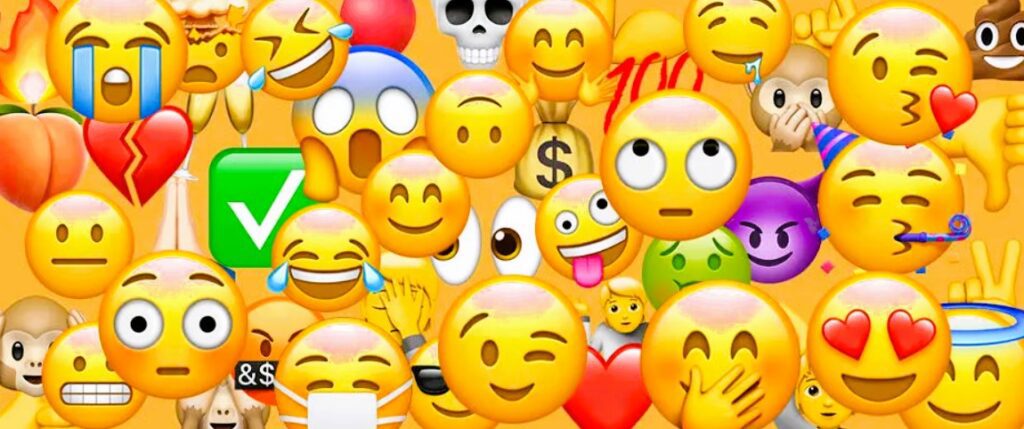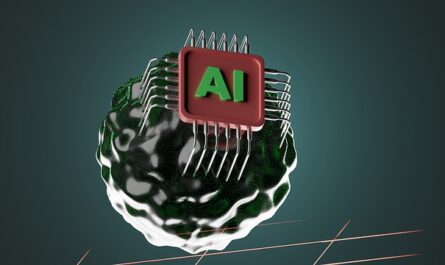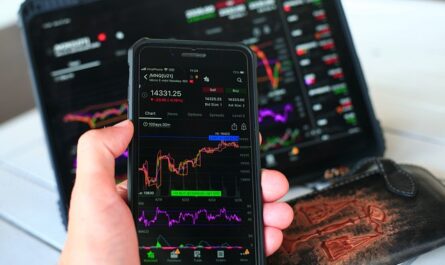Emojis are digital icons that represent emotions, ideas, and objects. Find out how these tiny symbols have revolutionized communication in the digital age.
What Are Emojis and How Do They Work?
In today’s digital age, communication has evolved tremendously. From sending messages and emails to video calls and social media posts, the way we interact with each other has changed significantly. One of the most innovative developments in communication has been the introduction of emojis. Emojis are digital icons that represent emotions, ideas, and objects. In this article, we will explore what emojis are, how they work, and how they have revolutionized communication in the digital world.
1. What are emojis?
Emojis are small digital icons that are used to express emotions, ideas, and objects. They are commonly used in text messages, emails, and social media platforms. Emojis are colorful and visually appealing, making them a popular way to convey feelings and emotions without using words.
2. A brief history of emojis
The first emojis were created in Japan in the late 1990s by a designer named Shigetaka Kurita. Kurita was working for a Japanese telecom company, and he came up with the idea of using small images to replace words in text messages. The first set of emojis was created in 1999, and they were used exclusively in Japan.
It wasn’t until the early 2010s that emojis became popular worldwide. Apple introduced the first emoji keyboard on the iPhone in 2011, and other companies soon followed suit. Today, there are over 3,000 emojis available, and they are used by millions of people worldwide.
3. How do emojis work?
Emojis work by using a code that is recognized by devices and applications. When you select an emoji, the code is sent along with the message or post. The recipient’s device then recognizes the code and displays the corresponding emoji. This code is known as Unicode, and it is a standardized system that is used to represent characters and symbols in digital communication.
4. The impact of emojis on communication
Emojis have had a significant impact on communication in the digital age. They have made it easier to convey emotions and ideas in text messages and emails. They have also made communication more fun and visually appealing. In addition, emojis have helped to bridge the gap between different languages and cultures. Emojis are universal and can be understood by people from all over the world, regardless of their language or cultural background.
5. Common misconceptions about emojis
There are several misconceptions about emojis that people have. One of the most common misconceptions is that emojis are only used by teenagers or young adults. However, research has shown that people of all ages use emojis in their digital communication. Another misconception is that emojis are only used to express positive emotions. In reality, emojis can be used to express a wide range of emotions, both positive and negative.
6. How to use emojis effectively
Using emojis effectively is all about context. Emojis should be used to enhance the message or post, not replace it entirely. They should also be used sparingly and not overused. Using too many emojis can make a message or post difficult to read and understand.
| Emoji | Name | Meaning | Description |
|---|---|---|---|
| 😊 | Smiling Face with Smiling Eyes | Happiness, contentment | A yellow face with smiling eyes and a closed smile, showing happiness and warmth. |
| 😂 | Face with Tears of Joy | Laughter, joy | A yellow face with a big grin and scrunched-up eyes, tilted on its side from left to right. Often conveys hysterical laughter. |
| 🤣 | Rolling on the Floor Laughing | Extreme laughter | A yellow face rolling on the floor with laughter, arms and legs in the air. Often used to show something is extremely funny. |
| 😭 | Loudly Crying Face | Sadness, grief | A yellow face with closed eyes and streams of tears, tilted on its side from left to right. Often conveys intense sadness or overwhelming emotion. |
| 😘 | Face Blowing a Kiss | Affection, love | A yellow face with a kissing motion, lips puckered and eyes closed. Often conveys love or a romantic gesture. |
| 😍 | Smiling Face with Heart-Eyes | Love, infatuation | A yellow face with heart-shaped eyes and a big smile, tilted on its side from left to right. Often conveys love or admiration. |
| 😳 | Flushed Face | Embarrassment, shyness | A yellow face with wide eyes and a red face, indicating embarrassment, shame or shyness. |
| 🙃 | Upside-Down Face | Playfulness, sarcasm | A yellow face with a slight smile and eyebrows turned upside down, indicating sarcasm or silliness. |
| 😉 | Winking Face | Playfulness, flirtation | A yellow face with a winking eye and small smile, indicating humor, playfulness, or flirtation. |
| 🙄 | Face with Rolling Eyes | Disbelief, annoyance | A yellow face with eyes closed and eyebrows raised, as if rolling its eyes. Often used to convey sarcasm or annoyance. |
| 😱 | Face Screaming in Fear | Shock, horror | A yellow face with wide eyes and a wide, open mouth, indicating fear, shock, or horror. |
| 🤤 | Drooling Face | Hunger, desire | A yellow face with drool dripping from one corner of the mouth, indicating desire, salivation or hunger. |
| 🥳 | Face with Party Horn and Party Hat | Celebration, excitement | A yellow face with a party hat and party horn, indicating excitement, celebration, or a festive occasion. |
| 😷 | Face with Medical Mask | Illness, medical care | A yellow face with closed eyes and a blue surgical mask, indicating illness or medical care. |
| 😬 | Grimacing Face | Discomfort, awkwardness | A yellow face with a tight-lipped grimace, indicating discomfort, awkwardness, or pain. |
| 😐 | Neutral Face | Blankness, neutrality | A yellow face with a neutral expression and closed mouth, indicating blankness or neutrality. |
| 🤪 | Zany Face | Crazy, silly | A yellow face with a big grin and eyes spiraling in opposite directions, indicating craziness, foolishness, or goofiness. |
| 🤢 | Nauseated Face | Disgust, illness | A yellow face with a greenish hue and a scrunched-up nose, indicating nausea or illness. |
| 🤭 | Face with Hand Over Mouth | Surprise, shock | A yellow face with a hand covering its mouth, indicating surprise, shock, or embarrassment. |
7. Emojis in marketing and branding
Emojis have become an important part of marketing and branding. Many companies use emojis in their social media posts and advertisements to appeal to a younger audience. Emojis can also be used to convey emotions and ideas in a more visually appealing way. However, it is important for companies to use emojis in a way that is consistent with their brand image and values.
8. The future of emojis
As technology continues to evolve, so too will emojis. It is likely that new emojis will be introduced to reflect changes in society and culture. It is also possible that emojis will become even more interactive, allowing users to manipulate and customize them in new ways.
9. Emojis and cultural differences
Emojis can sometimes be misinterpreted across different cultures. What may be considered a positive or negative emotion in one culture may not be the same in another. It is important to be aware of these cultural differences when using emojis in digital communication.
| Emoji | Name | Meaning | Description |
|---|---|---|---|
| 😎 | Smiling Face with Sunglasses | Coolness, confidence | A yellow face with sunglasses, tilted on its side from left to right, indicating coolness, confidence, or sophistication. |
| 🤬 | Face with Symbols on Mouth | Anger, frustration | A yellow face with a red mask over the mouth, indicating anger or frustration. The symbols on the mouth vary, but often include a series of exclamation points or other angry symbols. |
| 🤯 | Face with Exploding Head | Mind blown, amazement | A yellow face with a mind-blowing explosion coming out of the top of the head, indicating shock, amazement, or disbelief. |
| 😇 | Smiling Face with Halo | Goodness, angelic | A yellow face with a halo, indicating innocence, goodness, or angelic qualities. |
| 😈 | Smiling Face with Horns | Mischievous, devilish | A yellow face with a devilish smile and two horns on its head, indicating mischief, devilry, or naughtiness. |
| ❤️ | Red Heart | Love, affection | A classic red heart symbolizing love and affection. |
| 💔 | Broken Heart | Heartbreak, sadness | A heart broken in two, indicating heartbreak, sadness, or loss. |
| 👀 | Eyes | Attention, surveillance | A pair of eyes looking to one side, indicating attention or surveillance. |
| 💯 | Hundred Points | Perfection, excellence | A symbol indicating perfect or excellent quality, often used to express admiration or approval. |
| ✅ | Check Mark | Confirmation, approval | A green check mark indicating that something is correct, confirmed, or approved. |
| 🎈 | Balloon | Celebration, party | A colorful balloon typically used to indicate celebration, party, or joyous occasions. |
| 💀 | Skull | Death, danger | A human skull, often used to indicate death, danger, or a sense of foreboding. |
| 💰 | Money Bag | Wealth, success | A bag filled with money, indicating wealth, success, or financial gain. |
| 🤦 | Person Facepalming | Embarrassment, frustration | A person facepalming, with a hand on the forehead and eyes closed, indicating embarrassment, frustration, or exasperation. |
| 🤷 | Person Shrugging | Uncertainty, confusion | A person shrugging their shoulders with raised eyebrows, indicating a lack of knowledge, uncertainty, or confusion. |
| 🙋 | Person Raising Hand | Agreement, support | A person raising their hand, indicating agreement, support, or a willingness to participate. |
| 💩 | Pile of Poo | Crude humor, disrespect | A pile of poo with eyes and a mouth, indicating crude humor, disrespect, or contempt. |
| 🙈 | See-No-Evil Monkey | Playful, mischievous | A monkey covering its eyes with its hands, indicating playfulness, mischief, or the desire to avoid seeing something. |
| 🙉 | Hear-No-Evil Monkey | Playful, mischievous | A monkey covering its ears with its hands, indicating playfulness, mischief, or the desire to avoid hearing something. |
| 🙊 | Speak-No-Evil Monkey | Playful, mischievous | A monkey covering its mouth with its hands, indicating playfulness, mischief, or the desire to avoid saying something. |
| 🥂 | Clinking Glasses | Toast, celebration | Two glasses clinking together, indicating a toast or a celebratory occasion. |
| Emoji | Name | Meaning | Description |
|---|---|---|---|
| 🤌 | Pinched Fingers | Precision, small measurement | Two fingers (index and thumb) pinched together, indicating precision or a small measurement. |
| 🤗 | Hugging Face | Hug, comfort | A yellow face with open hands, as if giving a hug, indicating comfort, love, or support. Often used to express warmth, gratitude, or affection. |
10. Are emojis here to stay?
Emojis have become a ubiquitous part of digital communication, and it is likely that they are here to stay. As communication becomes more digital, emojis will continue to be an important way for people to express themselves.
11. Pros and cons of using emojis
There are both pros and cons to using emojis. On the one hand, emojis can enhance communication and make it more fun and engaging. On the other hand, overusing emojis can make messages difficult to read and understand. It is important to use emojis in a way that is appropriate for the context.
12. The psychology behind emojis
Emojis have been shown to have a psychological impact on users. They can enhance emotions and make messages more memorable. Research has also shown that using emojis can increase likability and perceived warmth in digital communication.
13. Emojis in the workplace
Emojis are becoming more common in workplace communication, but it is important to use them appropriately. In professional settings, it is best to use emojis sparingly and in a way that is consistent with the company’s culture and values.
14. Are emojis changing the way we communicate?
Emojis are changing the way we communicate in the digital age. They have made communication more visual and interactive. Emojis have also helped to bridge the gap between different languages and cultures.
15. Conclusion
Emojis are a fascinating development in digital communication. They have revolutionized the way we express emotions and ideas online. While there are both pros and cons to using emojis, it is clear that they are here to stay. As communication continues to evolve, emojis will continue to be an important part of our digital interactions.
FAQs:
- Can emojis be misinterpreted across different cultures?
- Yes, it is important to be aware of cultural differences when using emojis in digital communication.
- Are emojis only used by teenagers?
- No, people of all ages use emojis in their digital communication.
- How many emojis are there?
- There are over 3,000 emojis available.
- Are emojis changing the way we communicate?
- Yes, emojis are changing the way we communicate in the digital age.
- How do emojis work?
- Emojis work by using a code that is recognized by devices and applications, known as Unicode.
Please check out more articles on the following top-rated websites:
https://cryptoexchanginsider.com/
https://coinsutra.co.uk
https://afzatech.com/
https://thesavvyblogger.com




